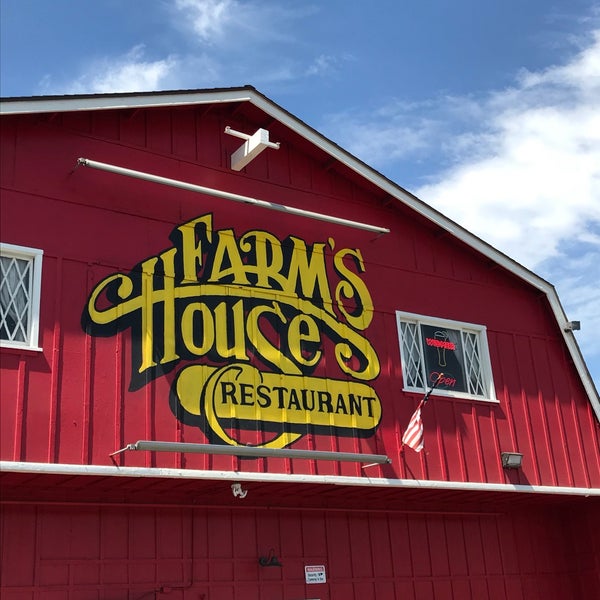Table Of Content

Golems constructed by the player, however, are always passive toward the player.Summoning golems, trading, and healing increase popularity. A village forms when a villager claims the first bed, indicated by green particles emitting from the bed and villager. New Points of Interest (POIs) like beds, bells, or job sites added within this area don't affect the village's size.
Tree houses
They sometimes stop sprinting to stare at other villagers,[Java Edition only] the player, or an iron golem. If the iron golem is holding out a poppy, the children may cautiously take the flower from its hands. Villagers can be found in villages, which spawn in several biomes such as plains, snowy plains, savannas, deserts, taigas, and snowy taigas[Bedrock Edition only] and can cut into other biomes such as swamps and jungles. When the village is generated, unemployed villagers spawn in them, the number of which depends on the buildings in that village, as some buildings generate villagers inside and some do not. All Minecraft villages – except abandoned villages, more below – will house villagers with whom you can interact to trade goods.
Minecraft zombie villages
In Bedrock edition there is an additional chance that a wandering trader will spawn at the village meeting point. This is when a large number of zombies spawn in or near a village, attacking what villagers they can reach, crowding around and pounding on the doors of those they can't. On hard or hardcore mode, they can actually break down the wooden doors (this is true of all zombies, not just during sieges). They'll attempt to beat them down on other difficulties, but not succeed. If the village borders expand, the center shifts to the geometric center to accommodate this growth, affecting where iron golems and cats spawn. While the origin point may still influence the bounding box to some extent, it will no longer necessarily correlate with the village center.
Professions
Woodland Mansion in Minecraft: All You Need to Know - Beebom
Woodland Mansion in Minecraft: All You Need to Know.
Posted: Sun, 28 Jan 2024 08:00:00 GMT [source]
Villagers and zombie villagers have seven skin types corresponding to the biome they spawn in. Their appearance also varies based on their profession and their five tiers. They show which trade tier they have unlocked by a badge of a varying material on their belt. A new tier is obtained every time a player trades with a villager and the badge appears as stone, iron, gold, emerald, and finally diamond. A job site block can be claimed only if it is unclaimed and within a village boundary with at least 1 bed. Removal of a claimed job site block causes the owner to switch to another profession or become unemployed, provided that the villager has no prior trades with the player.

Iron golem summoning
In Java Edition, villagers summoned by a spawn egg or via command /summon are always unemployed until they have claimed a job site block. In Bedrock Edition, however, villagers summoned in similar ways have a random profession[10]; their profession can be changed by a job site block, though. Zombies attempt to break down doors, but only a fraction of zombies can do so and can succeed only when difficulty is set to hard. Zombies who cannot break doors tend to crowd around a door that separates them from a villager. If a zombie or a drowned comes across a set of doors with one open, it usually tries to go through the closed door.
Minecraft village guide – how to find them and make your own - PCGamesN
Minecraft village guide – how to find them and make your own.
Posted: Tue, 17 Jan 2023 08:00:00 GMT [source]
homes of this area which were largely designed and built by Elisha (E.P.)
Villager breeding succeeds if the birthing parent can path to an unclaimed bed with at least two empty blocks over its head. Iron golem spawning happens if enough villagers haven't seen a golem recently, when gathered near a bell or panicked by zombies. Cats spawn around players in or near villages if enough beds (and few enough cats) are nearby. In Java Edition, wandering villagers may try to breed although there is no guarantee they will as villagers have multiple tasks to choose from while wandering. During a breeding attempt two willing (see § Willingness below) villagers will look at each other and heart particles will appear around each of them.

When the attempt fails anger particles are displayed, no baby villager is produced, and there is no cooldown before breeding may be attempted again. Since villagers can't breed during the night they may produce up to two children a day maximum. Villagers go into love mode (indicated by red heart particles above both their heads) if they have enough food to make themselves and their partner willing. Much like with farm animals, when two villagers are in love mode and can see each other, they go to each other and stare for a few seconds, after which a baby villager spawns next to them. The baby villager spawns wearing clothing dependent on the biome the village is in (with a small chance to inherit one of its parents' outfits, if different).
It acquires a job after it has grown up and if there is a valid, unclaimed job site. A gathering site is where villagers spend their mingling time during the day and can be anywhere in a village, even if it is not located in the center. When a bell is claimed, green particles appear above the bell and the bell is registered as a gathering site. If a player is in the village, a wandering trader can spawn from a claimed bell.
The unemployed can then change their profession by seeking and claiming an unclaimed job site block. The wander schedule includes a job-specific goal called "exploring the outskirts" that causes villagers to wander near the edges of the village. This enables them to detect new beds, job site blocks, bells, and houses that players have used to extend the village. All villagers that spawn in the village will instead spawn as zombie villagers. Cobblestone also has a higher chance of turning into mossy cobblestone than normal villages. In Java Edition, cats are spawned around players in or near villages.
In Bedrock Edition, if the zombie villager is player spawned, it adopts a randomly chosen profession. The villager can also be a nitwit, as the game counts it as a "profession" but the nitwit villager still can't work. If employed, the cured villager offers discounts on most of its trades. To breed more villagers, you need to provide extra beds (one for each expected baby villager) and lots of food. You can either create an actual ‘villager breeder’, or simply leave them to their business. Either way, it takes at least 12 potatoes, carrots, or beetroots to make a villager willing to breed.
The platform is made out of natural blocks such as grass, sand, sandstone, dirt, stone, and gravel. Mossy cobblestone sporadically replaces cobblestone when naturally generated, with abandoned villages having an increased likelihood of it happening. The player can run cats out of the village, thus allowing for more cats to spawn. If there are two villages, each already with 10 cats, merging the villages into a single village does not cause any cats to despawn.
These rare villages spawn without doors and torches, and some blocks will have been replaced by cobwebs, cobblestone is replaced with mossy cobblestone, and the windows contain brown glass panes. Any villagers that generate there will generate as a zombie villager, but the village may simply be deserted. Once a villager has claimed a bed, that bed is registered as a house in the village.[Bedrock Edition only] The villager remembers their bed location, even when underground.
But designing a house for them can also be a whole other challenge in itself. So for your convenience, here are some of the best Minecraft villager house ideas you can use. Each farm spawns as one of four types of crops, chosen between wheat, beetroot, carrot, or potato.











